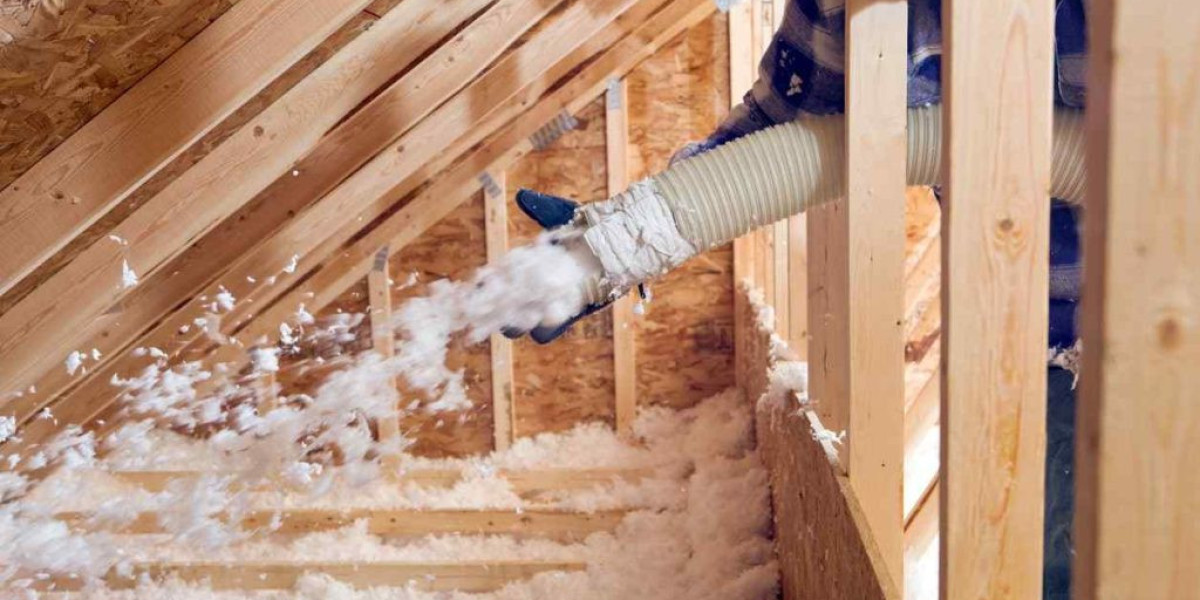When it comes to insulating your home, choosing the right insulation material is crucial for energy efficiency, comfort, and cost savings. Two of the most common options are blown-in insulation and fiberglass insulation. Each has its pros and cons, making it important to compare the two to determine which is best for your home.
In this post, we will explore the differences between blown-in insulation and fiberglass, covering the benefits, drawbacks, and factors to consider when choosing insulation for your home. By the end, you'll have a better understanding of which insulation type is right for your specific needs.
What is Blown-In Insulation?
Blown-in insulation, also known as loose-fill insulation, is a material that is blown or sprayed into attics, walls, and other areas that need insulating. The insulation can be made from a variety of materials, including cellulose (recycled paper products), fiberglass (shredded fiberglass fibers), or mineral wool.
This type of insulation is installed using specialized equipment that blows the material into hard-to-reach spaces, filling gaps and creating a solid layer of thermal protection.
Benefits of Blown-In Insulation
Comprehensive Coverage: One of the standout benefits of blown-in insulation is its ability to fill small cracks, crevices, and gaps. This makes it ideal for attics, walls, and other areas where air leakage may occur.
Energy Efficiency: Because blown-in insulation fills all gaps and creates a tight seal, it improves the energy efficiency of your home. This reduces heating and cooling costs by preventing air from escaping through poorly insulated areas.
Quick Installation: Blown-in insulation can be installed relatively quickly by professionals, making it a great choice for homeowners who want a fast, hassle-free upgrade.
Eco-Friendly Options: Blown-in insulation made from cellulose is an environmentally friendly choice since it’s often made from recycled materials.
Drawbacks of Blown-In Insulation
Requires Professional Installation: Blown-in insulation typically requires professional installation due to the specialized equipment needed to apply it evenly. This can increase the overall cost.
Settling Over Time: One disadvantage of blown-in insulation, particularly cellulose, is that it can settle over time, reducing its effectiveness. However, this can be addressed with proper installation and maintenance.
What is Fiberglass Insulation?
Fiberglass insulation is one of the most common types of insulation. It comes in pre-cut panels or rolls, which are placed between studs, joists, and rafters in walls, floors, and ceilings. Fiberglass is made from tiny strands of glass that are spun into a thick material that traps air, creating an insulating barrier.
Benefits of Fiberglass Insulation
Affordability: Fiberglass insulation is one of the most cost-effective insulation options on the market, making it an attractive choice for budget-conscious homeowners.
DIY-Friendly: Unlike blown-in insulation, fiberglass batts can be installed as a DIY project, which can help save on installation costs. Many homeowners choose this option for small projects or renovations.
Fire-Resistant: Fiberglass is naturally fire-resistant, which adds a layer of safety to your home.
Readily Available: Fiberglass batts are widely available and can be found in most home improvement stores, making it an accessible option.
Drawbacks of Fiberglass Insulation
Gaps and Air Leaks: One of the main drawbacks of fiberglass batts is that they don't provide the same level of coverage as blown-in insulation. Gaps between the batts can allow air to escape, which reduces the overall energy efficiency of the home.
Difficult to Install Properly: Although fiberglass batts can be a DIY project, they are difficult to install properly. If the batts are compressed, misaligned, or poorly fitted, their R-value (thermal resistance) decreases, lowering their effectiveness.
Less Eco-Friendly: While fiberglass can contain some recycled materials, it is not as eco-friendly as cellulose-based blown-in insulation.
Comparing R-Values: Blown-In vs. Fiberglass
The R-value is a measure of an insulation material's resistance to heat flow. The higher the R-value, the more effective the insulation is at keeping heat out or in. Both blown-in insulation and fiberglass have similar R-values, depending on the material used.
Blown-in insulation typically has an R-value of R-2.2 to R-3.8 per inch, depending on the material. Fiberglass blown-in tends to have a lower R-value compared to cellulose.
Fiberglass insulation has an R-value of R-2.9 to R-3.8 per inch, which is comparable to the higher range of blown-in insulation.
R-Value Considerations
In areas like Pensacola, Florida, where summers are hot and humid, and winters are mild, an R-value of R-30 to R-38 is recommended for attics. For walls and floors, R-13 to R-21 is typically sufficient.
Both blown-in and fiberglass insulation can meet these R-value requirements, but blown-in insulation may offer better coverage in hard-to-reach areas like attics, whereas fiberglass batts are more suited for open wall cavities.
Installation Process: Blown-In vs. Fiberglass
Blown-In Insulation Installation
Blown-in insulation requires professional installation due to the equipment involved. A technician will use a hose to blow the insulation material into attics, walls, or floors. This process is efficient, taking a few hours to a day depending on the size of the project. The blown-in material will fill gaps, cracks, and hard-to-reach areas, providing a uniform layer of insulation.
Fiberglass Insulation Installation
Fiberglass insulation is more DIY-friendly and comes in large rolls or pre-cut panels. These panels are placed between studs, joists, or rafters, ensuring that the batts fit snugly. However, for maximum energy efficiency, it is critical to install the batts without leaving gaps or compressing the material. Professional installation can ensure that batts are installed correctly.
Which Insulation is Best for Your Home?
When deciding between blown-in insulation and fiberglass batts, consider the following factors:
Coverage: If your home has many small gaps, cracks, or hard-to-reach spaces, blown-in insulation will likely provide better coverage and energy efficiency.
Budget: Fiberglass insulation is usually more affordable upfront and can be a DIY project. Blown-in insulation may cost more due to professional installation but may offer better long-term energy savings.
R-Value: Both insulation types offer similar R-values, but blown-in insulation can provide a more consistent thermal barrier in areas like attics and walls.
Eco-Friendliness: If you're looking for an environmentally friendly option, cellulose-based blown-in insulation is made from recycled materials, whereas fiberglass is less eco-friendly.
Fire Resistance: If fire safety is a priority, fiberglass may be a better choice due to their natural fire resistance.
FAQs
1. Which insulation lasts longer?
Both blown-in and fiberglass insulation can last for decades if properly installed and maintained. Blown-in insulation may require reapplication if it settles over time.
2. Can I install blown-in insulation myself?
Blown-in insulation typically requires professional installation due to the specialized equipment needed. It's not recommended as a DIY project.
3. Which insulation is better for soundproofing?
Blown-in insulation, particularly cellulose, is better at soundproofing compared to fiberglass batts because it fills gaps more effectively and has a denser composition.
4. Does insulation help with humidity control?
While insulation helps regulate indoor temperature, it doesn’t directly control humidity. However, proper insulation can prevent moisture buildup, which reduces the risk of mold growth.
5. How much insulation do I need for my home in Pensacola, Florida?
For homes in Pensacola, R-30 to R-38 is recommended for attics, while R-13 to R-21 is sufficient for walls and floors.
Conclusion
Choosing between blown-in insulation and fiberglass insulation depends on your specific needs, budget, and home structure. Blown-in insulation provides superior coverage and energy efficiency for attics and hard-to-reach areas, while fiberglass insulation is an affordable and easy-to-install option for open wall cavities.
For professional guidance on which insulation is best for your home in Pensacola, FL, or nearby areas like Milton, Pace, Navarre, Crestview, Gulf Breeze, or Foley, Alabama, contact Prestige Insulation Solutions, LLC at (850) 429-4969.



